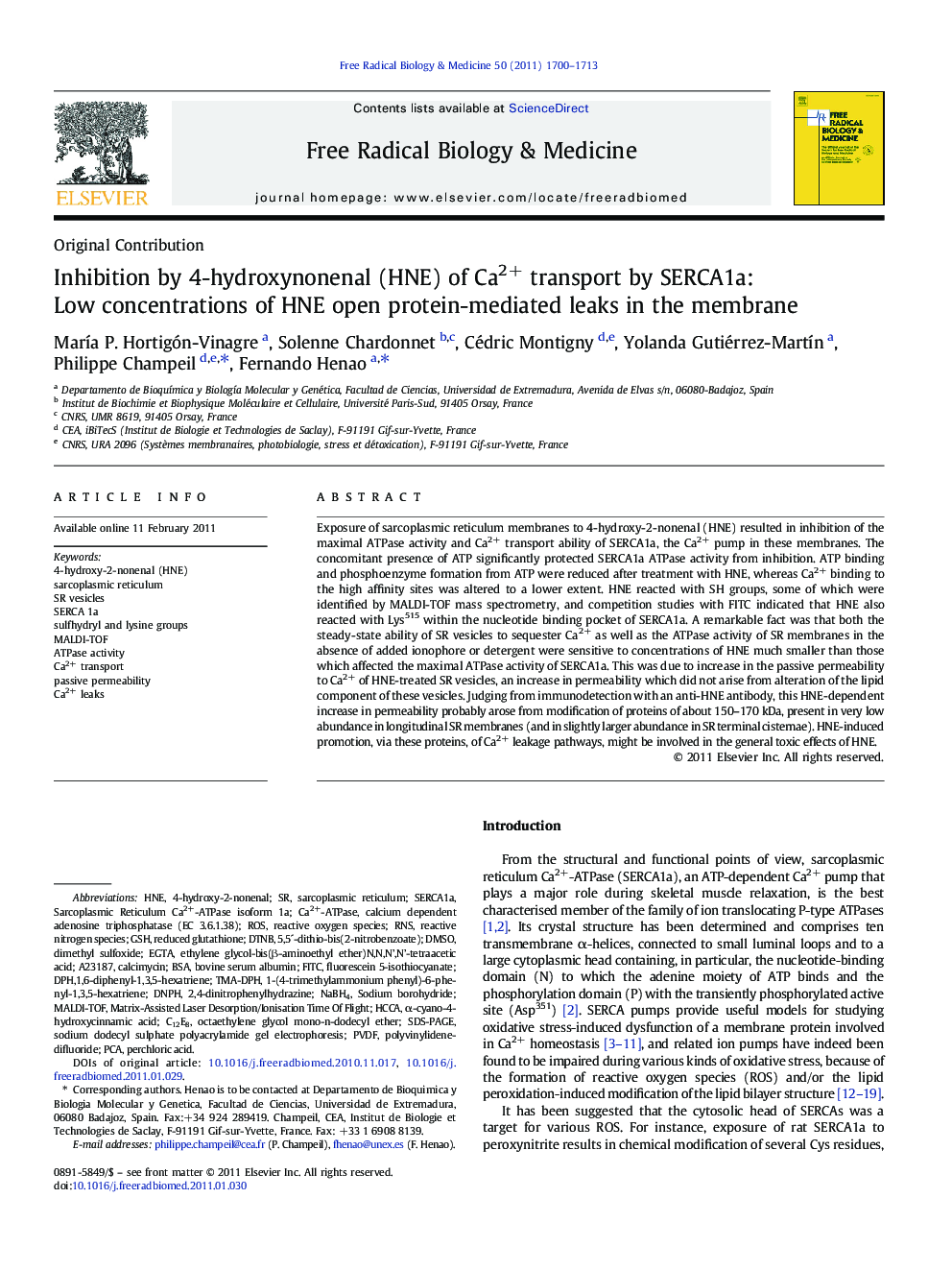| Article ID | Journal | Published Year | Pages | File Type |
|---|---|---|---|---|
| 10738691 | Free Radical Biology and Medicine | 2011 | 14 Pages |
Abstract
Exposure of sarcoplasmic reticulum membranes to 4-hydroxy-2-nonenal (HNE) resulted in inhibition of the maximal ATPase activity and Ca2+ transport ability of SERCA1a, the Ca2+ pump in these membranes. The concomitant presence of ATP significantly protected SERCA1a ATPase activity from inhibition. ATP binding and phosphoenzyme formation from ATP were reduced after treatment with HNE, whereas Ca2+ binding to the high affinity sites was altered to a lower extent. HNE reacted with SH groups, some of which were identified by MALDI-TOF mass spectrometry, and competition studies with FITC indicated that HNE also reacted with Lys515 within the nucleotide binding pocket of SERCA1a. A remarkable fact was that both the steady-state ability of SR vesicles to sequester Ca2+ as well as the ATPase activity of SR membranes in the absence of added ionophore or detergent were sensitive to concentrations of HNE much smaller than those which affected the maximal ATPase activity of SERCA1a. This was due to increase in the passive permeability to Ca2+ of HNE-treated SR vesicles, an increase in permeability which did not arise from alteration of the lipid component of these vesicles. Judging from immunodetection with an anti-HNE antibody, this HNE-dependent increase in permeability probably arose from modification of proteins of about 150-170Â kDa, present in very low abundance in longitudinal SR membranes (and in slightly larger abundance in SR terminal cisternae). HNE-induced promotion, via these proteins, of Ca2+ leakage pathways, might be involved in the general toxic effects of HNE.
Keywords
octaethylene glycol mono-n-dodecyl etherHNERNSDTNBA23187GSHEGTAC12E8DNPHHCCA4-Hydroxy-2-nonenal (HNE)PVDFTMA-DPHSERCA1aNaBH4MALDI-TOFFITCFluorescein 5-isothiocyanatepolyvinylidene-difluoride2,4-dinitrophenylhydrazine4-hydroxy-2-nonenalBSACa2+-ATPaseCa2+ TransportDMSOPCAROSbovine serum albuminα-cyano-4-hydroxycinnamic acidPerchloric acidSDS-PAGEsodium dodecyl sulphate polyacrylamide gel electrophoresisSodium borohydrideDimethyl sulfoxideSarcoplasmic reticulumATPase activityPassive permeabilityreduced glutathionecalcimycinreactive nitrogen speciesReactive oxygen species
Related Topics
Life Sciences
Biochemistry, Genetics and Molecular Biology
Ageing
Authors
MarÃa P. Hortigón-Vinagre, Solenne Chardonnet, Cédric Montigny, Yolanda Gutiérrez-MartÃn, Philippe Champeil, Fernando Henao,
